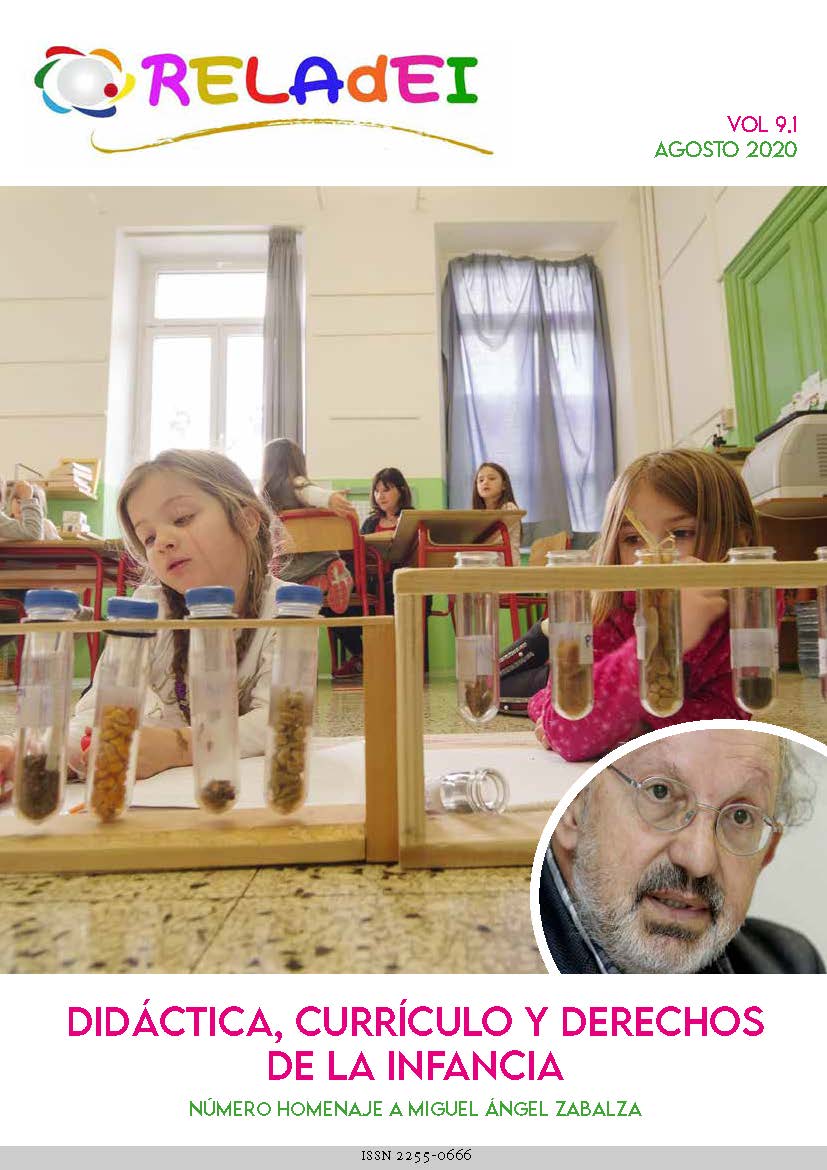Oportunidades de educación vocal y canto en la infancia: el programa World Voice
Contenido principal del artículo
Resumen
Este artículo aspira a abrir una línea de investigación que acerque a la comunidad investigadora en voz y canto a iniciativas que tienen lugar en diferentes partes del mundo cuya finalidad se eleva a la democratización de la educación vocal y del canto desde la infancia. Para ello, es necesario realizar múltiples estudios de caso que vayan sacando a la luz las bases de acciones de éxito que podrían infundir muchas otras, con el fin de seguir generando oportunidades en el acceso a la educación vocal y del canto. Por eso se propone como objetivo conocer el origen y las características del programa británico de canto World Voice, a través de la técnica de indagación documental. Reunida y categorizada la información, se establecieron cuatro categorías: origen y financiación del programa; definición, formación y recursos que ofrece; funcionamiento del programa; y recurso didáctico estrella: el libro de canciones de World Voice. Se concluye que las características que hacen de World Voice un programa interesante son la facilidad práctica que este supone para quien adopta sus estrategias; la contextualización de los procesos y los recursos; la formación de calidad; y la continuidad que ofrece.
Palabras clave:
Detalles del artículo
Referencias
Bisquerra Alzina, R. (Coord.) (2009). Metodología de la investigación educativa. Madrid: La Muralla.
Bresler, L. (2008). The music lesson. En J. Gary Knowles, & Ardra L. Cole (Eds.), Handbook of the ARTS in qualitative research (pp. 225-237). California: SAGE.
British Council (2016a). About British Council Music. Recuperado de http://music.britishcouncil.org/about
British Council (2016b). An introduction to World Voice. Recuperado de http://music.britishcouncil.org/projects/world-voice
British Council (2016c). World Voice: how does it work? Recuperado de http://music.britishcouncil.org/projects/world-voice/world-voice-how-does-it-work
British Council (2016d). World Voice Songbook. Recuperado de http://music.britishcouncil.org/projects/world-voice/world-voice-songbook
British Council (2016e). World Voice UK Training. Recuperado de http://music.britishcouncil.org/projects/world-voice/world-voice-uk-training
British Council (2017a). About us. Recuperado de https://www.britishcouncil.org/organisation
British Council (2017b). School and teacher resources. Recuperado de https://www.britishcouncil.org/school-resources
British Council (2017c). Schools Online. Recuperado de https://schoolsonline.britishcouncil.org/
British Council (2017d). What is international learning? Recuperado de https://i.gal/BCinternational-learning
British Council (2017e). Core skills. Recuperado de https://schoolsonline.britishcouncil.org/international-learning/core-skills
British Council (2017f). The World Voice Songbook. Recuperado de https://schoolsonline.britishcouncil.org/classroom-resources/world-voice/world-songbook
British Council (2017g). World Voice. Recuperado de https://schoolsonline.britishcouncil.org/classroom-resources/world-voice
British Council (2017h). World Voice Ideas and activities. Recuperado de https://schoolsonline.britishcouncil.org/classroom-resources/world-voice/resources
British Council (2017i). Connecting Classrooms. Recuperado de https://schoolsonline.britishcouncil.org/about-programmes/connecting-classrooms
British Council (2017k). Connecting Classrooms: how does it work? Recuperado de https://i.gal/BCconnclass
British Council (s.f.). British Council Arts Strategy 2016. Recuperado de https://www.britishcouncil.org/arts/about
de Fonzo, M. (2010). Cantoterapia: il teorema del canto. Roma: Armando Editore.
de Fonzo, M. (2012). Canta che ti passa. Roma: Sovera Edizioni.
DNPS (s.f.). Apoyo y acompañamiento socioeducativo para la infancia, la adolescencia y la juventud. Argentina: Dirección Nacional de Políticas Socioeducativas, Ministerio de Educación, Presidencia de la Nación. Recuperado de http://www.bnm.me.gov.ar/giga1/documentos/EL005920.pdf
Hamilton, L. & Corbett-Whittier, C. (2013). Using Case Study in Education Research. London: SAGE-BERA.
Piñeros Lara, M. O. (2004). Introducción a la pedagogía vocal para coros infantiles. Bogotá: Ministerio de Cultura, República de Colombia.
Stake, R.E. (2007). Investigación con estudio de casos. Madrid: Morata.
Ward, J. (1962). La Méthode Ward: Pédagogie musicale scolaire. París: Desclée.
Welch, G. F. (2012). The benefits of singing for children. Recuperado de https://www.researchgate.net/publication/273428150_The_Benefits_of_Singing_for_Children
Welch, G. F., Himonides, E., Saunders, J. & Papageorgi, I. (2010). Researching the impact of the National Singing Programme ‘Sing Up’ in England. Main findings from the first three years (2007-2010). Children’s singing development, self-concept and sense of social inclusion. London: iMerc.
Artículos más leídos del mismo autor/a(s)
- Lucía Casal de la Fuente, El Proyecto Pedagógico de “Argento Vivo”: 10 formas de proyectar la teoría en práctica. , RELAdEI. Revista Latinoamericana de Educación Infantil: Vol 3, Nº 1 (Enero-Abril, 2014)
- Lucía Casal de la Fuente, Estimulación del cerebro infantil Desde el nacimiento hasta los 3 años , RELAdEI. Revista Latinoamericana de Educación Infantil: Vol 3, Nº 1 (Enero-Abril, 2014)
- Lucía Casal de la Fuente, Montessori para todos | Montessori Connections , RELAdEI. Revista Latinoamericana de Educación Infantil: Vol. 3 nº3 (Diciembre 2014). "María Montessori: una lectura desde y para el s. XXI"
- Lucía Casal de la Fuente, Montessori, M. (2003). El método de la Pedagogía Científica. Madrid: Biblioteca Nueva. , RELAdEI. Revista Latinoamericana de Educación Infantil: Vol. 3 nº3 (Diciembre 2014). "María Montessori: una lectura desde y para el s. XXI"
- Lucía Casal de la Fuente, Philibert, N. (2002). Être et avoir (Ser y tener). , RELAdEI. Revista Latinoamericana de Educación Infantil: Vol. 4, nº3 (Diciembre 2015). Educación Infantil y Multiculturalidad
- Lucía Casal de la Fuente, Solo es el principio , RELAdEI. Revista Latinoamericana de Educación Infantil: Vol. 5, nº1 (Abril 2016). Infancia y naturaleza
- Lucía Casal de la Fuente, Porto Ucha, A. y Vázquez Ramil, R. (2015). María de Maeztu. Una antología de textos. Madrid: Dykinson , RELAdEI. Revista Latinoamericana de Educación Infantil: Vol. 5, nº1 (Abril 2016). Infancia y naturaleza
- Carol Gillanders, Laura Tojeiro Pérez, Lucía Casal de la Fuente, Sonorizando cuentos infantiles , Elos: Revista de Literatura Infantil e Xuvenil: Núm. 5 (2018)



